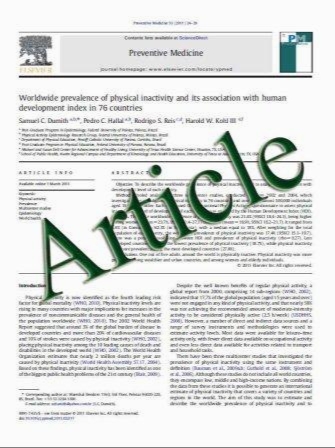Familial Nonsyndromic Patent Ductus Arteriosus Caused by Mutations in TFAP2B
- نوع فایل : کتاب
- زبان : انگلیسی
- مؤلف : Yi-Wei Chen • Wu Zhao • Zhi-Fang Zhang • Qihua Fu • Jie Shen • Zhen Zhang • Wei Ji • Jian Wang • Fen Li
- چاپ و سال / کشور: 2011
Description
Patent ductus arteriosus (PDA) is a common congenital heart disease that develops soon after birth when the arterial duct does not remodel. Mutations in TFAP2B, which encodes a neural crest-derived transcription factor, can cause Char syndrome, characterized by PDA, facial dysmorphism, and skeletal abnormalities of the hand. The TFAP2B mutations result in a great amount of phenotypic variability, and a novel TFAP2B mutation has been found in patients with nonsyndromic PDA. Therefore, this study investigated whether TFAP2B mutations can cause familial nonsyndromic PDA. Clinical data and peripheral blood specimens were collected from two kindreds (A and B) and from a cohort of 100 unrelated subjects with PDA. Kindred A spanned three generations, in which 5 of the 16 individuals had PDA, and kindred B spanned three generations, in which 2 of the 13 individuals had PDA. The study enrolled 100 unrelated healthy individuals as control subjects. Polymerase chain reaction (PCR) was used to amplify seven exons and flanking introns of the TFAP2B gene. A few exons of the TFAP2B gene were amplified using reverse transcription polymerase chain reaction (RT-PCR), and direct forward and reverse sequencing of the PCR products was performed. The acquired sequences were aligned with those in GenBank by using a basic local alignment search tool (BLAST). The following two types of mutations were identified in TFAP2B: c.601?5G[A and c.435_438delCCGG. The mutation c.601?5G[A was detected in the affected members of kindred A. Nested PCR showed a splice junction in intron 3 and a 61-bp deletion in exon 3. The mutation c.435_438delCCGG, found in the affected members of kindred B, was caused by a four-base deletion in exon 2, which in turn caused a frame shift that resulted in the formation of a premature stop codon, p.Arg145Argfsx45. None of these mutations was detected in the unaffected members of the kindred or in the control group. Furthermore, two novel single-nucleotide polymorphisms (SNPs), c.1-34G[A and c.539?62G[C, were detected in the introns. The variant c.1-34G[A was identified 34 bp upstream of the transcription initiation site in the TFAP2B gene. Significant differences in the prevalence of the alleles G and A were observed in the control subjects and PDA patients (Z = -2.513, P = 0.012). The study identified that another variant was c.539?62G[C but that the frequency of this variant was similar between the control subjects and the PDA patients (Z = -0.332, P = 0.74). The TFAP2B mutations may be associated with isolated nonsyndromic, hereditary PDA in Chinese families. The authors propose that a TFAP2B mutation should be considered a risk factor for isolated PDA. However, the detailed genetic mechanism underlying nonsyndromic the PDA-causing TFAP2B mutation is yet to be elucidated.
Pediatr Cardiol DOI 10.1007/s00246-011-0024-7 Received: 18 March 2011 / Accepted: 18 May 2011


